Ohio Buckeye

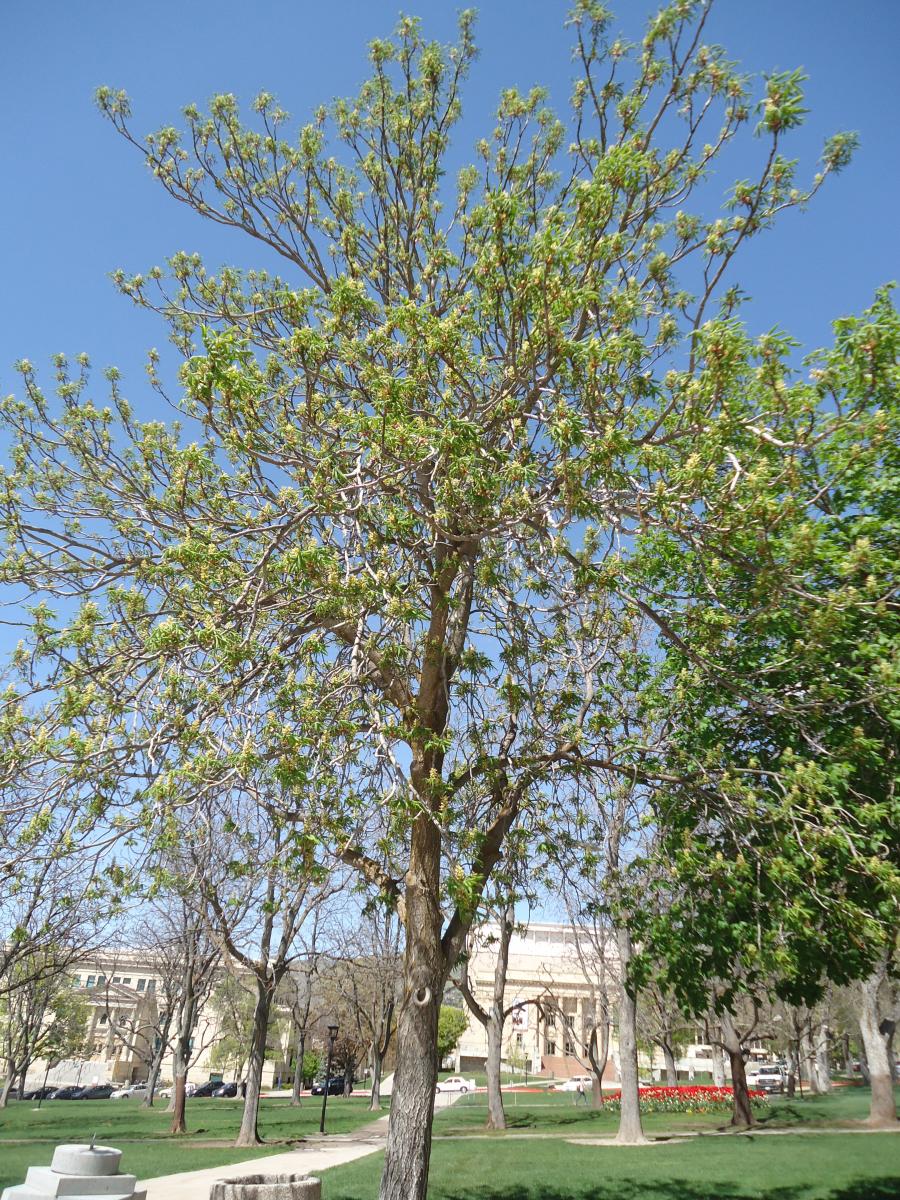

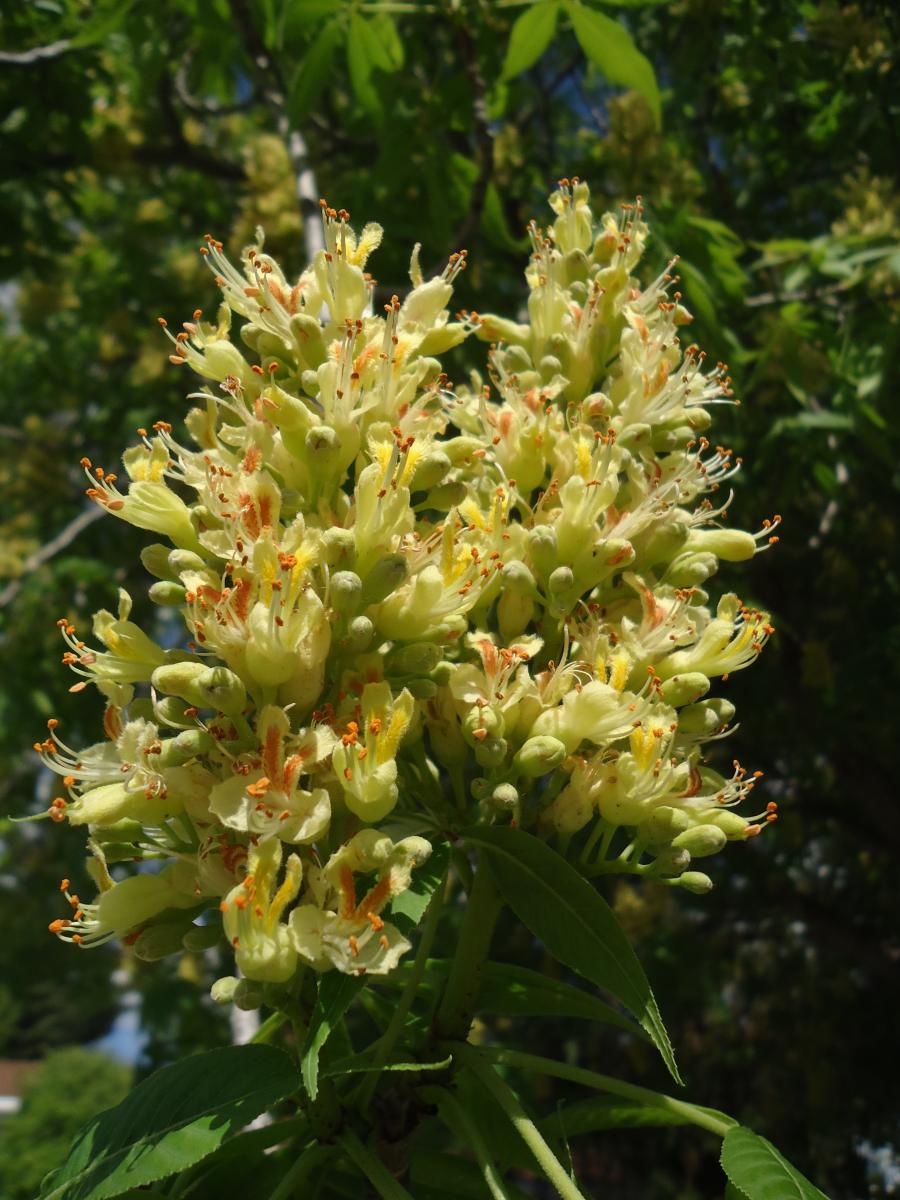
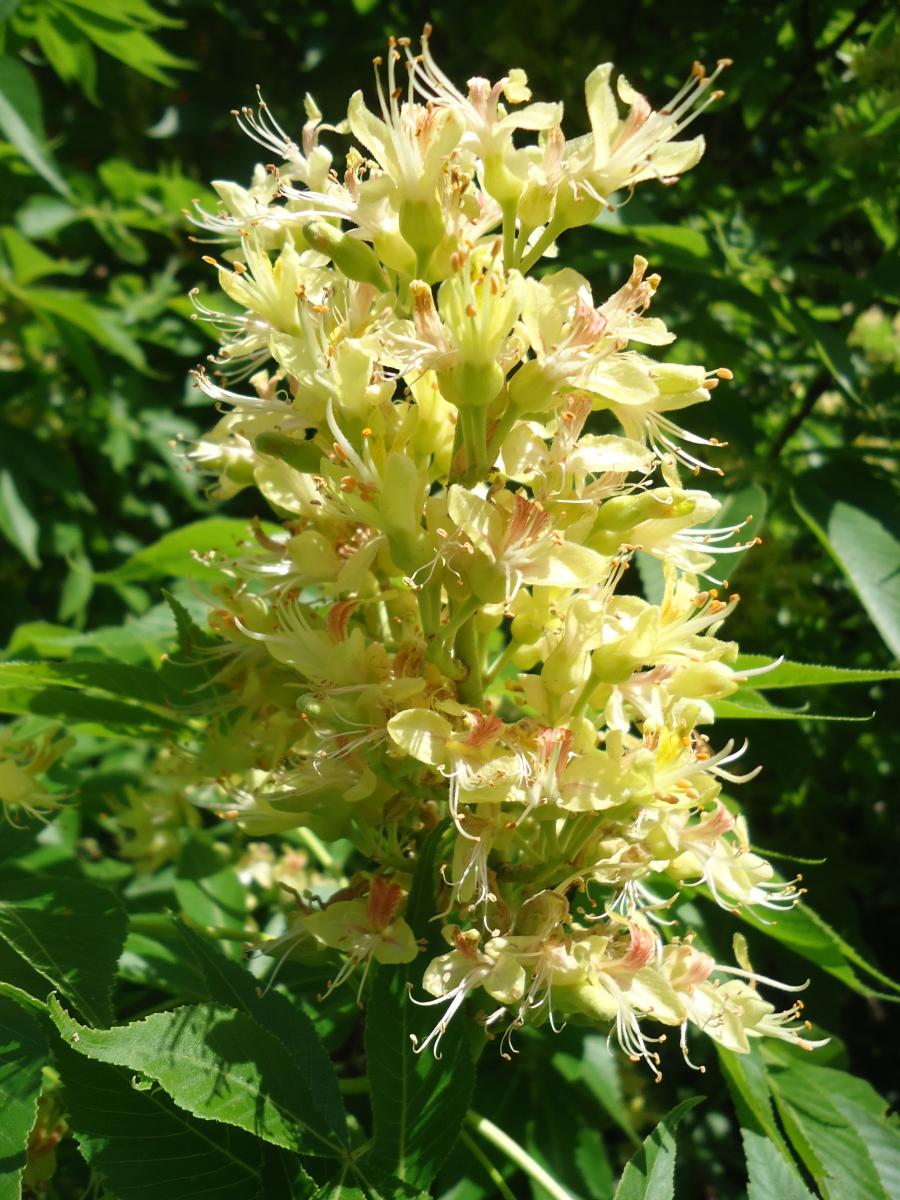

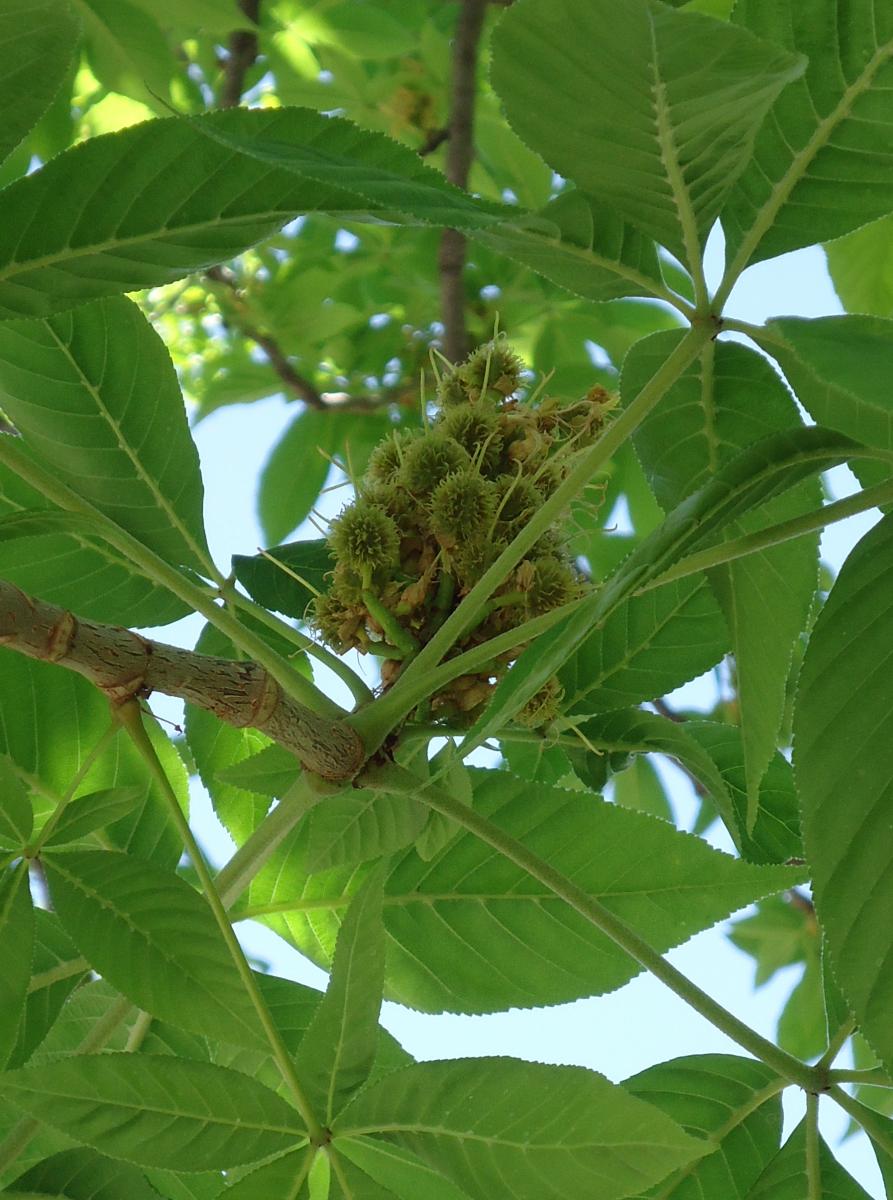
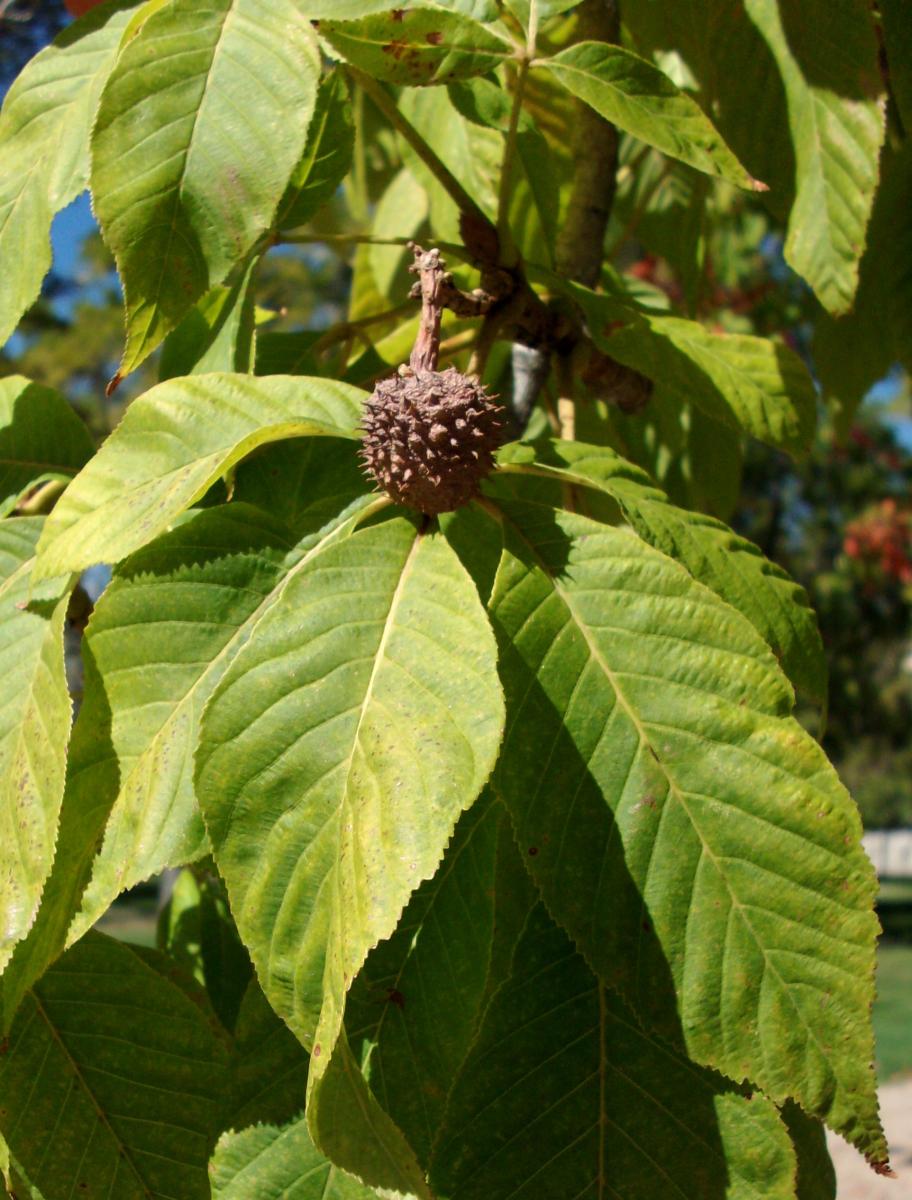
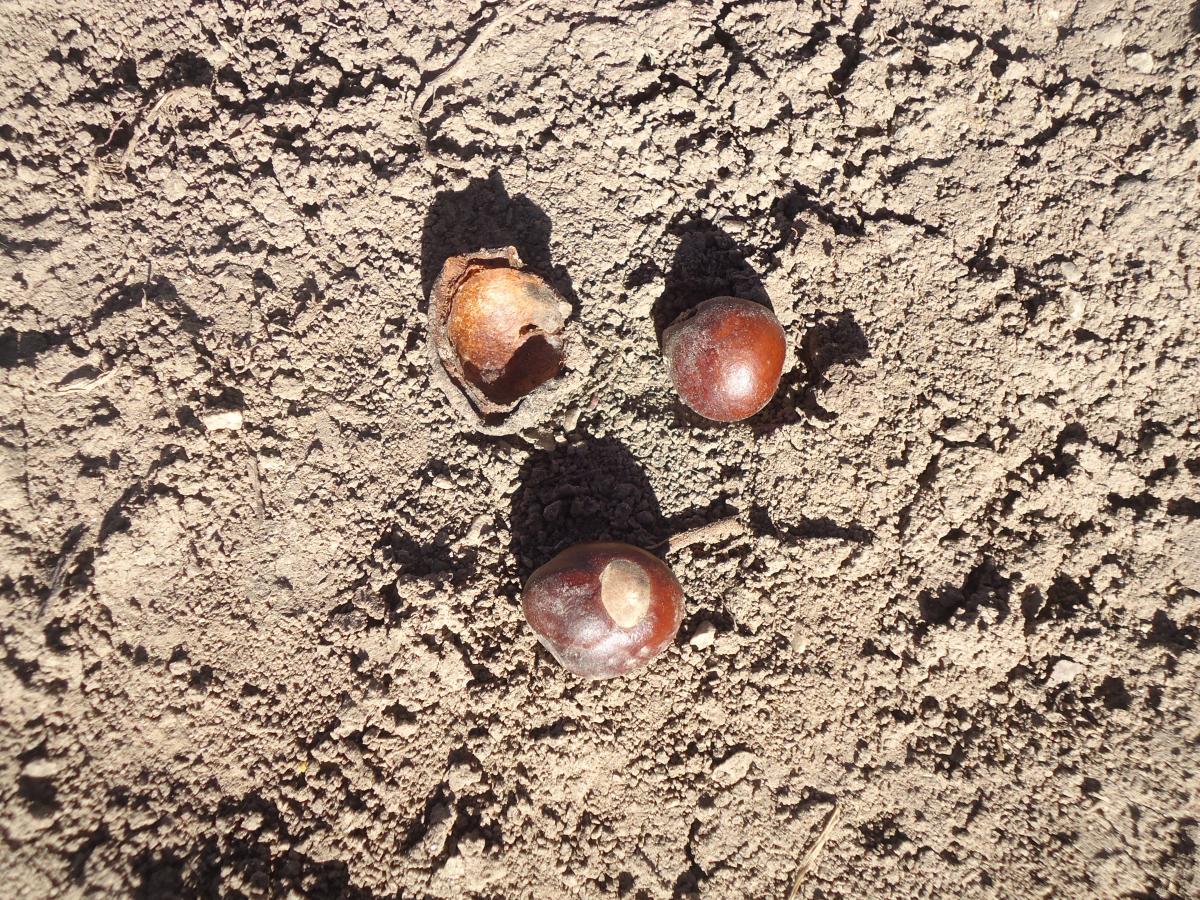
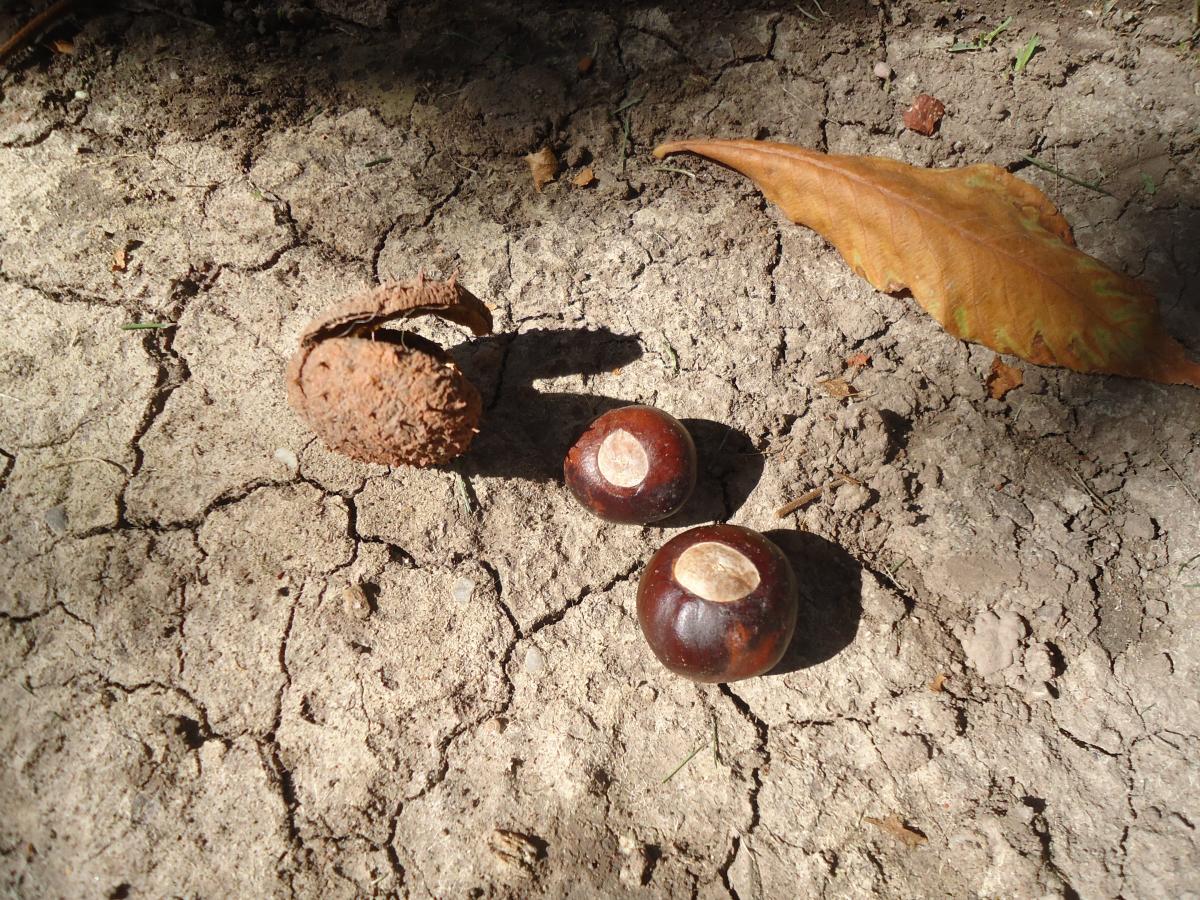
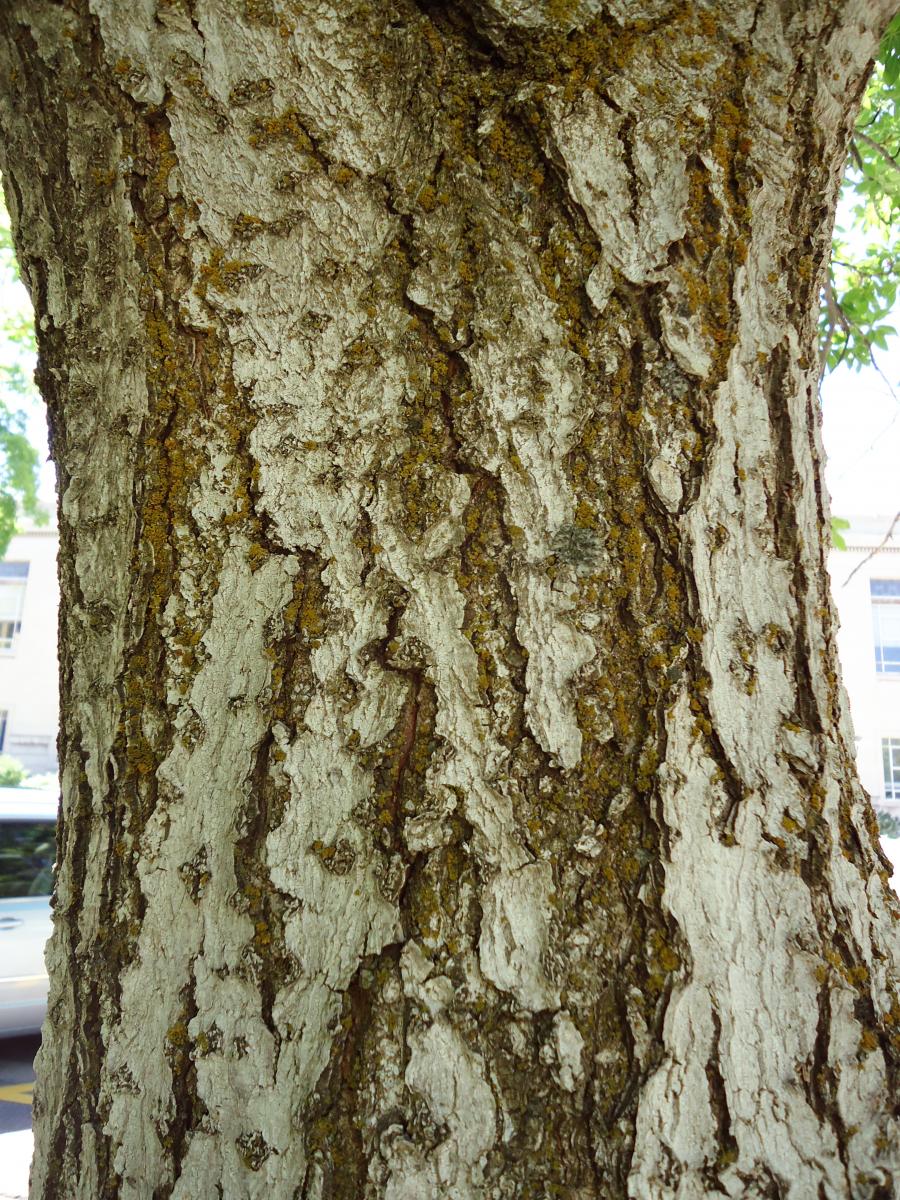
Aesculus glabra
Leaves: Deciduous. Leaves are composed of 5 leaflets, sometimes 7, that spread from the petiole or leaf stem like fingers. Leaflets are 3 to 6 inches long, broadest in the middle of the leaflet, and narrowing to a long point at the end. Medium to dark green color. Fall color is yellow or a red-orange. Leaves do not stay on the tree long after turning color.
Bark/Twigs: Ash gray bark with thick, deep fissures.
Flowers/Fruit: Yellow-green flowers grow in upright, conical clusters 4 to 7 inches tall by 2 to 3 inches wide. Leaves emerge before flowers are in bloom during late spring (May). Light brown capsules are 1 to 2 inches diameter and oval with a prickly cover and usually one seed. Seeds (buckeyes) are smooth, red-brown with a circular white patch and are poisonous.
Mature size and shape: Large. 40 feet high x 30 feet wide. Oval to pyramidal with a rounded top. Branches grow down towards the ground and then arch back up at the ends.
General information/special features: Plant in full sun to partial shade. Moist, well-drained, slightly acidic soil preferred. Does not tolerate drought well. Plant parts are toxic and should not be consumed. Buckeyes are often carried by people as tokens of good luck.
Landscape use and maintenance: Good shade tree, best used in parks or natural settings with large open areas. Not ideal for urban use or as a street tree. Medium growing rate. High maintenance with seeds and flowers. Prune in early spring.
USDA Hardiness Zone: 4 to 7
Family/Origin: Hippocastanaceae – Buckeye. Native from the Appalachians of Virginia, Pennsylvania, and N. Carolina to Texas, Oklahoma, Kansas, and southeastern Nebraska.
Campus Use: Extremely uncommon. Only specimen. Can be found on south side of President's Circle or southeast of the Alumni House (Bld 52).
